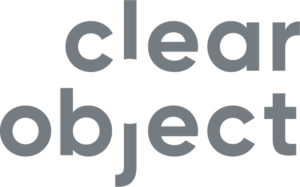It’s a question that has more than a few answers:
What’s the one aspect of IoT projects that gives new IoT products and IoT applications the best chance to succeed?
In a recent post, we made the case for ideate sprints, which help you “pinpoint the ‘right’ product ideas” to begin with. With the development of IoT products being a step-by-step process, ideation is that vital first step to understanding the problems your customers face and the solutions you need to create for them.
But while an ideate sprint sets the stage for IoT success, a design sprint sets everything in motion.
The design sprint process in 3 parts
At ClearObject, we view a design sprint in three segments. First, your team conceptualizes how it will provide the solutions your customers need. Second, you create a high-fidelity prototype and test it with actual customers. And third, with your customers’ challenges in full view, as well as the opportunities you’ve identified, you validate the IoT product or application you plan to deliver.
Also just as they are for ideate sprints, design thinking and the agile process are instrumental throughout each design sprint stage to optimize your product idea.

Be committed 100%
There’s a commitment component to design sprints, too. To succeed, sprints first require planning, starting with your project sponsor taking time to define the sprint’s goals, location, and other details. Who should participate? To provide a full organizational perspective for the project, stakeholders from all parts of your organization—development, engineering, sales, marketing, etc.—should make up the team. Ideally, to keep the design sprint process manageable and moving, this team about six to eight persons.
During the design sprint itself, commit to at least two full business days with your team members, plus a couple hours for a subsequent iteration sprint to review results of user research and updates.
What happens after a design sprint?
Most notably, decisions on how to move forward become easier to make. By having a tangible representation of your product in hand and real user insights to guide your next steps, decisions are simply informed. And trustworthy.
More importantly, with your features roadmap clearly defined, the roadmap is ready to implement with your engineering team (or preferably, ours) to bring your product to life.
What you get – a 4-week Product Discovery Accelerator

The outcome
The outcome of a design sprint and its deliverables can depend on the vendor partner you work with. When you work with ClearObject, you can expect to walk away with:
• Documentation of the initial research results
• A clear product vision to guide internal alignment, including success metrics
• Clear yes/no answers to the questions you started with
• Recommended next steps based on effort and impact as defined by your team
• A high-fidelity interactive prototype, tested by real users
• An objective measure of prioritization for all opportunities
• A high-level executive summary with recommendations on how to proceed
Best case, a design sprint should follow an ideate sprint to give new IoT products and IoT applications the greatest chance to succeed. Consider it a unified aspect of the most successful IoT projects.
We do.
Contact Us
We’ll show you how a design sprint works in unison with an ideate sprint to take your IoT projects from the idea and opportunity stage to successfully delivered products.
,https://www.clearobject.comervices
#designsprints #designsprint #iotprojects #iotproducts #iotapplications #ideatesprints #ideatesprint

